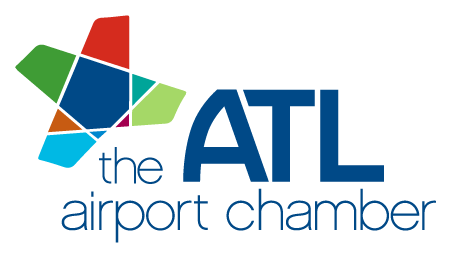Industrial Demand Slackening, But Airport-Area Warehouse Space Tight As Ever

Plenty of tenants are still searching for industrial space in the submarket around Hartsfield-Jackson Atlanta International Airport even as leasing activity regionwide slows down from pandemic highs, panelists said at Bisnow’s Aerotropolis event earlier this month. The activity has existing landlords in the submarket not only bullish on the health of the area but also seeking further development opportunities.
“If you look at just the airport, I mean, it’s still very, very busy,” Prologis Vice President Cassie Hanavich said onstage at the Hilton Atlanta Airport hotel. “Anything over a half-million square feet has seen a little bit of a slowdown, but demand is still strong.”
Despite the tumult caused by rising interest rates and concerns over a possible recession, more than 2.7M SF of industrial space was absorbed during the first quarter of the year, according to CBRE.
The airport submarket includes Aerotropolis Atlanta in Hapeville, Union City, South Fulton County, portions of Clayton County and Fairburn. Lee & Associates Executive Vice President Rick Tumlin said the submarket is a critical hub for distribution center users, encompassing 16% of all of Metro Atlanta’s more than 800M SF of distribution centers as a whole.

Tenants absorbed more than 658K SF of the industrial space in the 82.2M SF airport submarket in the first quarter alone, according to CBRE’s first-quarter report. That was among the highest for all of Metro Atlanta during that period, outstripped by the Northeast/Interstate 85 corridor, which saw absorption exceed 1.3M SF, and the Southeast/Interstate 75 corridor, which absorbed more than 984K SF.
Airport-area landlords also commanded some of the strongest rents in the region, with the average asking rate at $7.23 per SF, up 17% from $6.16 per SF in the fourth quarter of 2022.
Proximity to the airport remains a key driver of tenant activity, including with the film and television industry. But since the start of the year, bulk warehouse prospects have gone somewhat quiet and instead are being replaced by a bevy of companies looking for smaller increments of space in the airport submarket, Tumlin said.
“We still are seeing fairly good activity, decent activity at 100K SF and below, and especially at 50K SF and below, which actually I think is good because typically most companies looking for smaller increments in space mean their business is good,” Tumlin said. “And that’s just a good, I think, bellwether for the economy.”
At the same time, available warehouse space in the submarket is at a minimum. The area has a vacancy rate of 3%, according to CBRE, among the lowest in the metro area and down from 4.8% in the fourth quarter despite developers delivering 1.4M SF so far this year, positioning the market in favor of landlords.
“There’s still a lack of supply if you look at just the airport,” Hanavich said. “Our portfolio at the airport is 99% occupied right now. We still have many customers and tenants who look to grow, and they have nowhere to go.”

While developers were under construction on more than 1.3M SF in the submarket in the first quarter, the lack of developable sites is putting a ceiling on developers to add much more inventory despite demand, Robinson Weeks Senior Vice President Tyler Jones said. That could lead to some of the older industrial properties being renovated or even redeveloped in the coming years.
“There’s really not a lot of developable entitled sites remaining, and it’s kind of a story that we see in all of our markets, not just Atlanta,” Jones said.
In October, Prologis acquired Duke Realty in a mammoth deal valued at $23B. While Prologis pruned some of Duke’s portfolio after the acquisition with properties that didn’t fit the company’s strategy long-term, Hanavich said when it came to the Duke warehouses in the airport submarket, “we’re keeping everything.”
Link Logistics Vice President Elliot Williams said Link is focused on markets like the airport that act as last-mile destinations for a variety of tenants and not just those that rely on Hartsfield-Jackson for their business.
“You go out to some of these outlying areas, you’re betting on that future growth and that continued expansion of the metro area,” he said. “Link is very focused on infill last-mile logistics space. We’re not making a bet on what could happen. We’re betting on what is existing and what’s going to continue to grow.”
Article courtesy of Bisnow published July 3, 2023. For additional information, contact Jarred Schenke at jarred@bisnow.com

